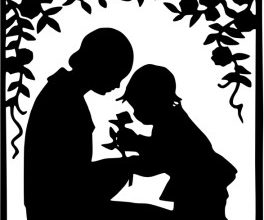The poem Checking Out Me History by John Agard is a powerful verse first published in his collection Half Caste (2005). Composed in free verse, it follows an unregulated rhyme scheme with no definite structure in the division of lines per stanza. The lack of punctuation unveils meanings at two levels- primarily as a counter-attack on the formal system of education the British imparted during the colonization, and to attend to the continuity of the speaker’s thoughts who satirizes the Colonial education. This also renders the poem an element of performance which Agard intends to bring out as an indigenous tradition of orality.
The first-person speaker could be the poet himself due to the use of the personal pronoun “me” in the title as well as throughout the poem or it can be an individual experiencing a similar fate as that of the poet. The monologue style also serves the purpose of ranting about and criticizing British education which deliberately omits the history of the non-white settlers in their curriculum. Knowing about history enables one to shape his/her life events and eventually identity. The entire poem operates on the binaries of light and dark, vision and blindness to emphasize the opposition of past and present.
John Agard is a Guyanese writer whose cultural and historical roots lie in the Caribbean. His artistic flamboyance firmly believes in conveying his background and heritage in its true and unfiltered form. By employing his native dialect to ascribe his works an aura of musicality, he differs from his contemporaries in an attempt to write back to the imperialists in his distinct style and affirm an agency to establish his own identity.
Checking Out Me History | Analysis, Lines 1-3
Dem tell me
Dem tell me
Wha dem want to tell me
The poem commences with a refrain “Dem tell me” that appropriates the standard English language pronouns “them” or “they.” It expresses frustration about the deprivation of one’s own cultural ties and knowledge. The speaker right at the onset institutes a difference between him/her and the colonial education system. He/She is informed about the identity they possess which signifies a lack of agency. The system teaches about the facts and events suitable to it by censoring the great past of the speaker. The verb “want” directs to the power the former exercises and the latter craves.
Checking Out Me History | Analysis, Lines 4-9
Bandage up me eye with me own history
Blind me to my own identity
Dem tell me bout 1066 and all dat –
dem tell me bout Dick Whittington and he cat
But Touissant L’Ouverture –
no dem never tell me bout dat
The information the schools in the British education system of the speaker’s time pass down to its non-white students prevents them from learning about their past and subsequently shaping a brighter future.
When one hears or sees the word “bandage,” an immediate thought links it to covering up and healing wounds. Such imagery depicts how the system ironically claims the native history’s omission as a beneficial force to the non-white students who should not learn about their tragic past. They metaphorically cover the eyes of the speaker which hinders vision. The ironic strain also continues in the education’s role to enlighten the people but in this case, it blinds them. Interestingly, bandaging up the speaker also suggests the victim position he/she occupies in the entire trajectory of colonization.
The quatrains in the entire poem reflect on the British historical events and literature that the speaker otherwise learns instead of the more relevant ones. They are juxtaposed with more worthy and inspiring histories of people belonging to the speaker’s own community to mock the education system which fails to teach about the influential figures who came from the Caribbean culture. Agard is educating the readers.
1066 is a landmark year in British history that reserves the Battle of Hastings and the Norman Conquest. “Dick Whittington and His Cat” is English folklore that delivers a moral of the rewarding nature of good deeds. What is their relevance to the speaker? This is a crucial question the poem seeks to raise and thus answer too. Rather than educating on memorable figures such as Touissant L’Ouverture whose contribution to abolishing slavery in Haiti and the Haitian Revolution misses the pages of colonial textbooks. Gaining independence from European dominance evidences his valor and courage which could be inspirational to many young minds.
This stanza has a rhyme scheme of aaba and plays on the words “dat” (that), “bout” (about) and “he” (his).
Checking Out Me History | Analysis, Lines 10-21
Toussaint
a slave
with vision
lick back
Napoleon
battalion
and first Black
Republic born
Toussaint de thorn
to de French
Toussaint de beacon
of de Haitian Revolution
This set of lines/phrases reveals the achievements of the great figure Toussaint who is repeated multiple times. The repetition aims to carve a permanent mark in the mind of the readers. Toussaint’s journey from a slave to becoming the first man to overthrow colonial rule in his nation is remarkable. A black man wins over a white man i.e. Napoleon Bonaparte. He is a visionary and the fire responsible for lighting up the revolution. His praise also connotes hope for liberation and the internal rhymes like Napoleon- battalion, born-thorn and beacon-revolution lend a song-like quality to it.
Checking Out Me History | Analysis, Lines 22 – 25
Dem tell me bout de man who discover de balloon
and de cow who jump over de moon
Dem tell me bout de dish run away with de spoon
but dem never tell me bout Nanny de maroon
This quatrain with a rhyme scheme of aaaa again contemplates the English fictional literature consisting of rhymes like “Hey Diddle Diddle” and the book And The Dish Ran Away With The Spoon along with the white men’s discoveries like that of the balloon. The speaker contrasts it with inspirational and famous 18th-century leader Nanny de Maroon whose leadership in facilitating the escape of previously enslaved Africans is noteworthy. The guerrilla warfare against the British authorities in the colony of Jamaica grants her the status of a national hero among the Jamaicans.
Checking Out Me History | Analysis, Lines 26-35
Nanny
see-far woman
of mountain dream
fire-woman struggle
hopeful stream
to freedom river
Dem tell me bout Lord Nelson and Waterloo
but dem never tell me bout Shaka de great Zulu
Dem tell me bout Columbus and 1492
but what happen to de Caribs and de Arawaks too
The speaker narrates Nanny’s personality who is a strong woman and seen far like an insightful fighter with high dreams that spark the fire of struggle, leading to a hopeful journey toward freedom and independence. Imagery of different elements of nature such as “mountain,” “stream.” “fire” and “river” gives her character an air of natural positivity. Not to forget, “fire” also symbolize light to continue the strain of thought from the previous lines.
The quatrain rhymes with an aaaa pattern like the previous one and puts forward the events surrounding Admiral Nelson’s win in the Battle of Trafalgar and the world-renowned Battle of Waterloo which marks the defeat of Napoleon Bonaparte’s rule forever. Like the British, the speaker’s culture to has great fighter men like Shaka Zulu. But as usual, he doesn’t receive a mention in the syllabus. The mention of Christopher Columbus and his discovery of the Americas and the first known contact of Europe with the Caribbean stands ironic to the subsequent colonization and ill-treatment of the natives, including the speaker.
Checking Out Me History | Analysis, Lines 36-49
Dem tell me bout Florence Nightingale and she lamp
and how Robin Hood used to camp
Dem tell me bout ole King Cole was a merry ole soul
but dem never tell me bout Mary Seacole
From Jamaica
she travel far
to the Crimean War
she volunteer to go
and even when de British said no
she still brave the Russian snow
a healing star
among the wounded
a yellow sunrise
to the dying
This stanza practices a rhyme scheme of aabb. Similar to the previous quatrains, this one too reflects on a famous English statistician Florence Nightingale and her ingenious nursing techniques during the Crimean War. The “lamp” is a symbol of life she is popularly associated with in literature. The fictional children’s narrative Adventures of Robin Hood and the nursery rhyme “Old King Cole” are devoid of any significance to the speaker. On the other hand, the speaker interrogates Mary Seacole who like Florence Nightingale finds a mention in the history of the Crimean war as a nurse but is unlikely to find recognition.
The speaker alludes to Mary Seacole’s journey from Jamaica to the horrific place of the war despite the British denial. The racist attitude of the British towards the black nurse who doubts her capabilities however fails to stop her. She opts for a difficult route via Russia and experiences extreme weather conditions. Her bravery accords the metaphor of a “healing star” and “yellow sunrise” who comes as a ray of hope and life in the lives of the wounded and dying soldiers. “Star” and “sunrise” carry forward the trope of light in the poem.
Checking Out Me History | Analysis, Lines 50-53
Dem tell me
Dem tell me wha dem want to tell me
But now I checking out me own history
I carving out me identity
The last stanza of the poem is a concluding quatrain that again employs the refrain “Dem tell me” but the tone shifts to an active voice who has taken charge of the situation. The speaker resolves to stand up and carve out his/her own identity by revisiting his/her cultural history. He/She shall not be a passive recipient of insignificant knowledge anymore and will defy the ongoing trajectory. “Carving” signifies a work of art that requires action and effort to ensure permanence. The new identity the speaker wishes to search and establish will be more assertive and secure.
The poet himself claims this poem to be a celebratory verse that engages with his linguistic heritage through the Calypso –a form of music from the Caribbean created by slaves to communicate about their masters and also ridicule them. The poem expounds on how the whites whitewashed the native history of their colonies. The colonizer’s desire for the pre-colonized past to be forgotten in order to create a space for the existence of a colonizing future mirrors the Eurocentric education system that prefers to teach about fictional stories rather than relevant historical figures. Nonetheless, the poet through his art educates his readers about the great men and women from his cultural background to sow the seeds of inspiration in young minds. His words in a postcolonial context encourage all the readers to be the commanders of their own destinies and never let a foreign force dominate them or take over their identity.





